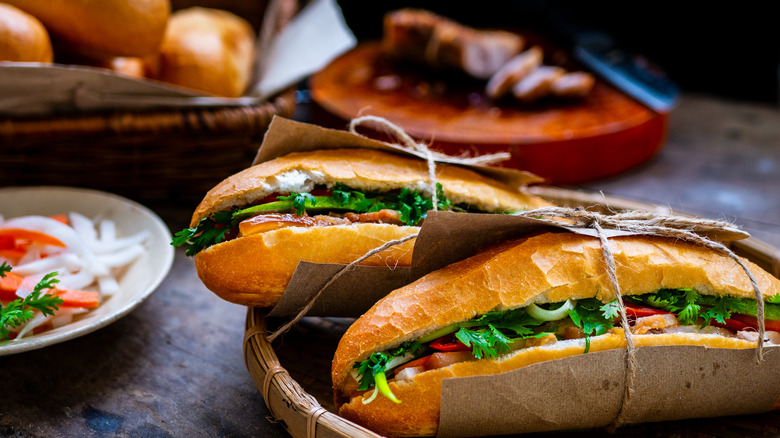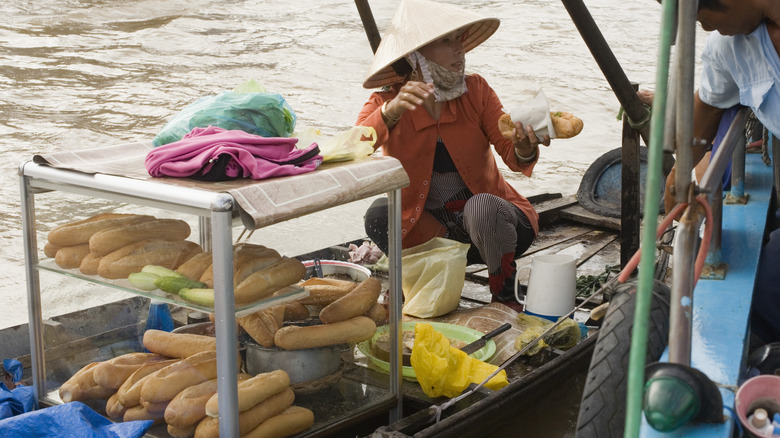Why Vietnamese Baguettes Are More Than A Replica Of The French Original
When biting into a bánh mì (aka a Vietnamese baguette sandwich), the crispy crust crackles softly and crumbs fall, yielding to an airy, delicate interior — unlike its French counterpart, which tends to be denser and chewier. Within a bánh mì, you'll often find vibrant flavors and textures like pickled carrots, cilantro, Vietnamese ham, margarine or mayonnaise, and liver pate. At first glance, the baguette used in this iconic sandwich might appear to be a replica of the French original, especially given Vietnam's history as a French colony. However, the Vietnamese baguette is more than a replica; it's a culinary masterpiece in its own right, reflecting a dark history of colonization and racism to symbolize empowerment and Vietnamese gastronomic prowess.
During the era of colonization, the French imported culinary staples from Europe, including butter, cold cuts, and baguettes, as they were reluctant to adopt local eating habits and felt Vietnamese food was inferior. Locals began to consume these imported goods and had to learn to cook French and other European foods for the colonizers. The end of colonization in 1954 catalyzed the birth of the bánh mì as we know it. In this period of turmoil, about one million northerners fled to the South. Mr. and Mrs. Le, credited with creating the modern bánh mì, ingeniously placed various ingredients inside a baguette, making the food portable for those abandoning their homes en masse.
The scientific and literal rise of bánh mì
So, despite sharing a colonial history with France, Vietnam has made the baguette its own. If you're wondering about the alchemy that gives Vietnamese baguettes unique attributes, there are several theories, tips, and recipes. For one, contrary to popular belief, rice flour is not a necessary ingredient. While some recipes include it, many use all-purpose flour without sacrificing the baguette's signature texture.
Bánh mì also requires a hotter oven — around 450 degrees Fahrenheit compared to the typical sub-400 degrees Fahrenheit used for many other bread recipes. You'll also need steam to give these baguettes their characteristically light and crispy crust. Place a bowl of water beneath the loaf to steam the bread while it's in the oven. You'll also have to lightly mist the bread with water a few times while baking.
As for what goes inside bánh mì, traditional fillings include cold cuts and vegetables. These days, almost anything can go in, like grilled chicken or charred pork, fried eggs or tofu, and even curried proteins. The next time you enjoy bánh mì, remember that it's not a mere replica of the French original but also a cultural amalgamation and poignant narrative of resilience and ingenuity. The bánh mì is a delicious testament to the spirit of Vietnam.

